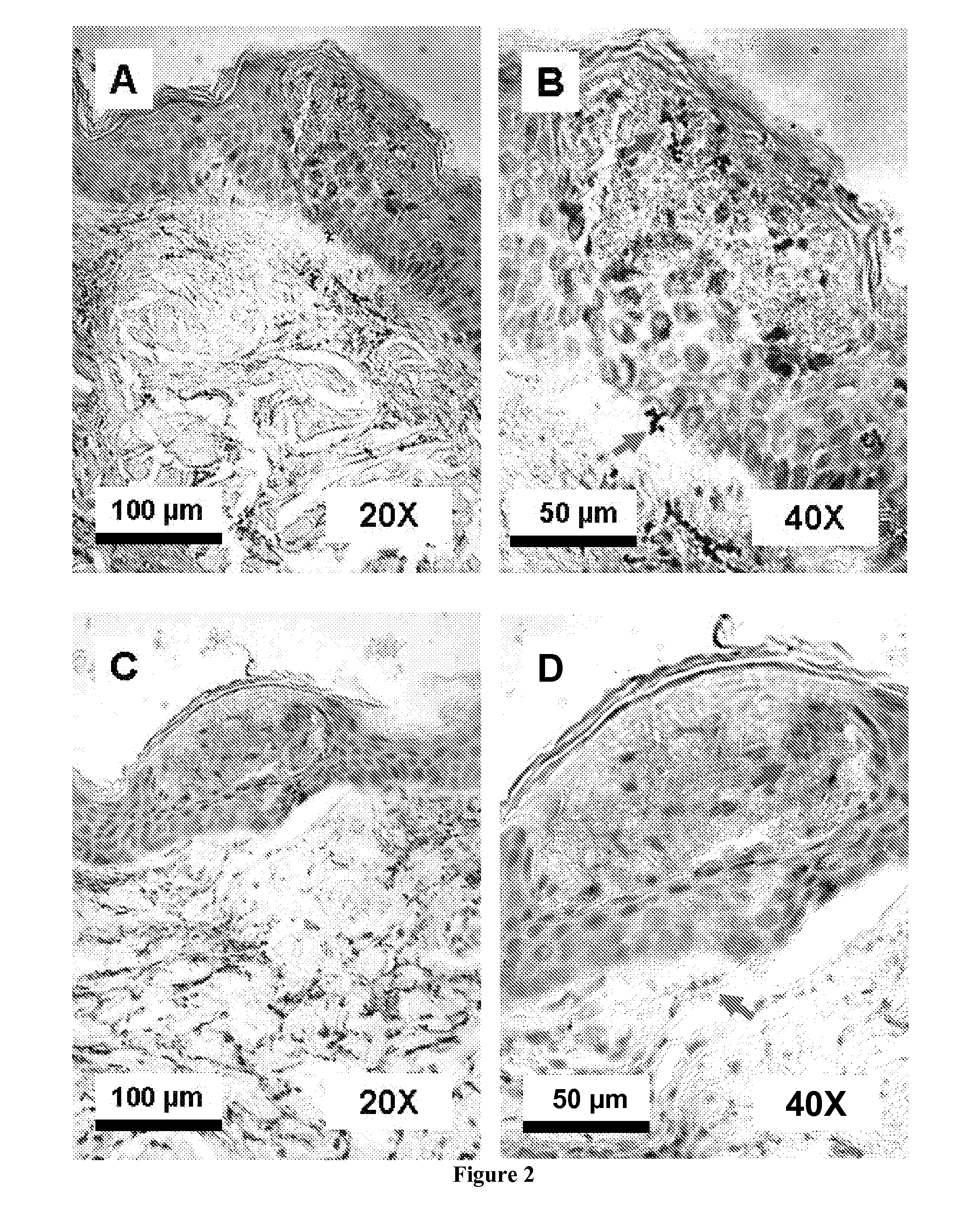Laser-induced transepidermal elimination of content by fractional photothermolysis
- Summary
- Abstract
- Description
- Claims
- Application Information
AI Technical Summary
Benefits of technology
Problems solved by technology
Method used
Image
Examples
example 1
[0057] Two healthy subjects of Fitzpatrick skin type II were treated on the abdomen with the 1550 nm fractional laser system (Reliant Technologies Inc., Palo Alto, Calif.) one day prior to abdominoplasty. An institutional review board approved the study protocol and informed consent was obtained from both subjects prior to participation in the study. Hair within the test sites was removed by shaving and topical anesthesia was locally administered an hour prior to laser treatment. Each laser treatment covered approximately 12 cm2.
[0058] A plurality of treatment beams was delivered wherein each treatment beam was substantially single-mode, approximately Gaussian in shape, and was either 60 μm or 140 μm in diameter at the skin surface as measured to the 1 / e2 intensity point. The first subject received treatment from the smaller diameter microbeams, and the second subject received treatment from the larger diameter microbeams, both at various pulse energy levels. Pulse energies ranged ...
example 2
[0064] Melanin, which is the pigment that colors the epidermis and / or the dermis, originates from melanocytes in the basal cell layer. If the basal layer is removed, a new basal layer must be regenerated in order to provide pigment to the overlying epidermis. To treat an area of skin with melanin, the hair in the treatment area is removed using conventional stripping methods, and, optionally, an antibiotic or a pain killer is massaged into the skin. A handpiece delivering 1550 nm laser light is used to directly irradiate the skin with a laser pulse energy of 20 mJ, 60 μm incidence microbeam spot size, and spot density of 3000 MTZ / cm2. This irradiation creates a plurality of vacuoles within the layers of skin below the stratum corneum layer of the skin while leaving the stratum corneum substantially intact. The treatment results in necrosis and / or denaturation of some of the skin containing melanin without ablation of the stratum corneum. The skin sloughs off these treated cells natu...
PUM
 Login to View More
Login to View More Abstract
Description
Claims
Application Information
 Login to View More
Login to View More - R&D
- Intellectual Property
- Life Sciences
- Materials
- Tech Scout
- Unparalleled Data Quality
- Higher Quality Content
- 60% Fewer Hallucinations
Browse by: Latest US Patents, China's latest patents, Technical Efficacy Thesaurus, Application Domain, Technology Topic, Popular Technical Reports.
© 2025 PatSnap. All rights reserved.Legal|Privacy policy|Modern Slavery Act Transparency Statement|Sitemap|About US| Contact US: help@patsnap.com



